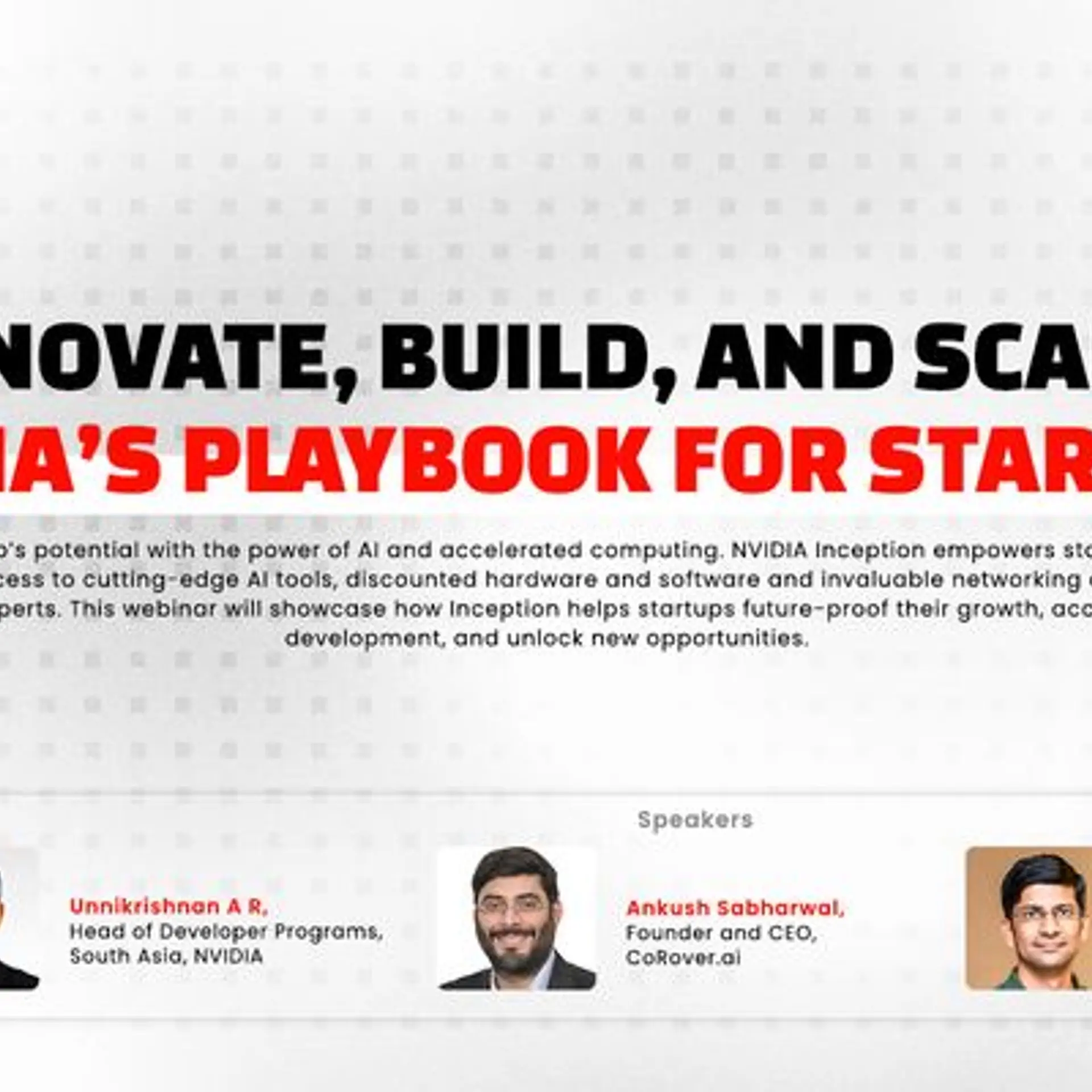‘Clear head, deep heart, thick skin’ - how to harness design thinking for creative problem solving
This must-read book on design thinking provides actionable frameworks, useful tips, and examples for startups and corporates.
Launched in 2012, YourStory's Book Review section features over 280 titles on creativity, innovation, entrepreneurship, and digital transformation. See also our related columns The Turning Point, Techie Tuesdays, and Storybites.
A wealth of tips, examples and worksheets on individual and group creativity is featured in the compelling book, Design your Thinking: The Mindsets, Toolsets and Skillsets for Creative Problem-Solving, by Pavan Soni.
“The biggest contribution of design thinking to the discourse on creative problem-solving and innovation has been to bring to prominence the significance of empathy, experimentation and iteration, and the imperative of embracing ambiguity, instead of fearing it,” the author begins.
This approach has been particularly useful for tech products and startups, but can be extended to all facets of professional and even personal life. Design thinking is not just about design but about thinking in a holistic and disciplined way, Pavan emphasises; hence the title of the book advocates a shift in approach to thinking.
Dr Pavan Soni is founder of innovation consultancy Inflexion Point. He is a mentor for NSRCEL at IIM Bangalore and Founder Institute. He graduated from MBM Engineering College, Jodhpur, NITIE Mumbai, and IIM Bangalore.
The ten chapters are thoroughly referenced, with over 30 pages of notes and sources. There is a handy tear-away poster with a mindmap of the book’s topics, as well as plenty of tables (though the text in some of them may be a bit difficult to read).
The book is a treatise and a treat: a blend of academic depth and business practicality, written in a way that would appeal to broader audiences. The author extends earlier design thinking frameworks, and documents over 50 case studies in the Indian context. Here are my key takeaways from this valuable 360-page book, summarised as well in Table 1.
See also my reviews of the related books The Startup Way, The Startup Owner’s Manual, The Serendipity Mindset, Creative Confidence, Deliver Great Products that Customers Love, Frugal Innovation, Cross-Industry Innovation, Innovator’s DNA, and Business Storytelling Techniques.

Foundations
Successful innovations begin with a target problem or opportunity, not just an idea. Linear “stage gate models” of innovation have a number of shortcomings such as lack of early and continuous market validation, Pavan cautions.
He builds on existing frameworks of design thinking such as those of Stanford d.School and IDEO. “Design thinking is to innovation what Six Sigma is to quality,” Pavan evocatively explains.
Based on a 2X2 framework of known or unknown problems and solutions, the author differentiates design thinking from lean thinking (for reducing variations in manufacturing), critical thinking (getting to root causes, eg. TRIZ), and lateral thinking (new patterns, eg. Six Thinking Hats, SCAMPER, Buyer Utility Map).
Design thinking is at the intersection of human desirability, technical feasibility, and business viability. This calls for sensing unmet and unarticulated customer needs, and integrative thinking to combine different ideas into solutions.
A number of other organisations have come out with their own variations of these foundational models as well. For example, ’s version is called Design for Delight (D4D), with innovation catalysts and D4D Forums.
In Infosys, Vishal Sikka introduced the BICEP initiative (Bringing Innovative Culture in Every Project). The Zero Bench programme lets employees between projects work on short projects of their own choice via an internal marketplace.
Accenture’s version of design thinking is called FORM (inform, formulate, freeform, transform, outperform), and there is a three-day course called Design Thinking Academy. See also YourStory’s ‘8 Is' framework for design thinking.
Design thinking has an emphasis on doing (not just conceptualising) and experiencing. It is empathy that leads to discovery, and the approach combines inspiration, serendipity, implementation, and storytelling.
Function matters more than form, and purpose matters more than product, Pavan emphasises. There is a lot of intuition, craft and even messiness, ambiguity and uncertainty involved.
Discipline should amplify creativity without destroying it. “Learn to compartmentalise your thinking,” Pavan advises. He spells out three compartments: problem exploration (no ideation), solution generation (no judgment) and solution validation (no preconception).
The design thinking process has elements of hands-on work and play along with prototyping. A lot of visualising is also involved, with maps, charts, storyboards, and Post-it notes. “In a way, design thinking is more about design tinkering,” Pavan jokes.
The author also spells out some of the challenges and limitations of design thinking. Design thinking may not be effective in fundamental research (tech push) and pure improvisation, Pavan observes.
Empathy without focus can lead to getting lost in the concerns of the customers (‘compassion fatigue’). The impact of ideas and solutions is felt only when the problem definition is sharp, he adds. Unfortunately, many people try to solve the symptoms, not the underlying problems or deeper root causes.
Design thinking is particularly important today due to rapid diffusion of tools for creation (eg. digital media), blurring of products and services into experiences, and empowered customers who want to be involved in co-creation and co-design. There also non-obvious and unexpected market shifts, Pavan adds.
For example, the rise of the male grooming market in India (spurred by the beards of cricketers and movie stars) dented the fortunes of Gillette. The SUV market mushroomed in India despite poor roads and dense urban traffic.
Successes and failures
The road to innovation is paved with a number of failures even by successful companies, such as the Apple Newton, Sony Betamax, Microsoft Zune, Iridium satellite, Mahindra two-wheelers, and Aakash tablet.
Tata Nano unfortunately focused on “sympathy, and not empathy,” Pavan observes. It lost out on commercialisation and positioning, and was regarded as the “poor man’s car.”
Examples of design thinking at scale include DARPA of the US, whose ambitious goals led to the creation of the computer mouse, Siri, drones, autonomous cars and the Internet.
The founder of had personal travel experiences which led him to launch his affordable stay platform. Ritesh Agarwal iterated and pivoted a number of times before scaling up his venture.
Titan elevated watches from beyond functional timepieces into adornments and collectables. It improved the customer’s buying experience and set up repair centres in showrooms to win trust.
Maruti Suzuki launched with a focus not just on affordable cars but extensive and high-quality after-sales service. It then expanded into pre-owned cars, driving schools, and premium cars.
Honda tapped the India market via gearless scooters and sturdy vehicles, beyond just considerations of mileage. Tata Motors identified a market for mini trucks (Ace), a segment between three-wheeler carriers and larger trucks. It met the customer need for affordability as well as desire for prestige.
Companies like Amazon have combined long-term commitment to the India market along with a string of technology and local business model innovations (eg. Chai Cart, I Have Space).
The Embrace Baby Warmer came out with an entirely different product by focusing on the constraints of rural mothers, not on improving existing incubators in hospitals. Pharma major Dr Reddy’s has a design thinking centre called Studio 5B, with a broad mix of employee backgrounds. offices have a poster of the entire patient journey, to inculcate employee focus on patients and not just products.
Having charted some of the foundations, drivers and successes of design thinking, the author delves into the five steps of design thinking, reviewed below and in Table 1.

1. Inspire
High-level vision, a sense of purpose, and stretch goals should be combined with a pithy brief. These could address near-term and long-term timelines as well. Audacious goals help push people’s imagination, expectations and performance.
The author gives a number of examples of creative briefs: ‘to provide the ordinary people what only the rich can afford’ (Future Group); ‘make a watch no thicker than a floppy disk’ (Titan Edge); ‘build India’s first people’s car’ (Maruti 800); ‘build India’s first indigenous car’ (Tata Indica); and ‘build a world-class SUV for value-conscious Indians’ (Mahindra).
An effective brief spurs creativity through ‘how might we’ questions. Metaphors are useful in this regard as well: ‘a music player to fit into a shirt pocket’ (Walkman); ‘a video cassette the size of a paperback which could hold an hour of color program’ (Betamax); and the cheetah metaphor for the Mahindra XUV500.
Mahindra also launched a loyalty programme, factory visits, and the Torque Day driving experience in the Buddh International Circuit. The Future Group has a Chief Belief Officer (mythologist Devdutt Pattanaik) to broaden employee perspectives.
Though a late entrant in India’s highly competitive airline industry, IndiGo airlines’ guiding principles are punctuality, low fares, and efficient service. It pioneered passenger ramps, check-in kiosks at airports, hand-held devices to scan boarding passes, and even ‘IndiGo Standard Time.’
“Unlike productivity, where variance is detested, creativity embraces variance,” Pavan shows. Employee diversity helps bring divergent ideas that can improve the final offering, but leaders must ensure respect and camaraderie in “constructive confrontation.”
Lemon Tree Hotels consciously employs people with disabilities in its workforce. They excel in some aspects of observation and attention to detail, are more loyal to good employers, and bring a positive social image to the company.
Tom Kelley (The Ten Faces of Innovation) identifies ten personas that must be present in an innovation group, in three categories: learners, organisers, builders. The personas are anthropologist, experimenter, cross-pollinator, hurdler, collaborator, director, experience architect, set designer, storyteller, and caregiver.
2. Empathise and define
Empathy converts data into insights, and goes beyond the “cold statistics” of market research, Pavan explains. It helps understand problems, emotions, wants and aspirations of customers – and even unearth unarticulated needs and anticipate future concerns.
Customers may be irrational at times, but problem-solvers should be non-judgmental and prioritise which problem to solve with the proper boundary constraints. In the digital age, real-time experience tracking (RET) offers particularly valuable insights into customer behaviours, eg. abandoned carts in e-commerce.
“Another promising way to listen to emerging customers and engage with the larger ecosystem is through startups. By virtue of most startups working on the interstices of what large companies often miss out on, such engagements can often yield surprising insight,” Pavan explains.
A company’s employees themselves can become the first customers of their product. Companies that show empathy and respect for their own employees can become market leaders as well, Pavan adds.
He shows a number of tools in action on a hypothetical problem of improving car buying experience. They include Mind Map (explore problem space), Stakeholder Map (decision making), Customer Journey Map (milestones, concerns), and Empathy Map (what customers say, do, feel, think).
Hindustan Lever offers employees rural and international stints to understand and connect global and local concerns. This helped create Pureit, the world’s largest-selling water purifier brand that is both affordable and of high-quality. It leveraged local entrepreneur networks and also used effective metaphors to explain price points.
Microsoft invites startup founders to its leadership retreat. (See also YourStory’s Startup Hatch series of profiles of corporate accelerators and incubators.)
Steve Jobs was an advocate of minimalism so as not to overload customers with features. He cultivated unique customer insights in a range of industries: computers, animated movies, music and phones.
Mahindra’s Shadow Board of young managers helped uncover insights that led to its Navistar truck line. Royal Enfield’s CEO himself rides the company’s bikes in the Himalayas to understand customer needs of rigour. Kishore Biyani’s understanding of the Indian consumer mindset led him to design Big Bazaar with elements of the local mandi and not orderly aisles of supermarkets.
Netflix and BigBasket use digital technology to generate actionable market insights, eg. movie preferences, delivery times.
Starbucks has a strong employee-centric culture, as seen in their healthcare benefits. Tanishq has set up Karigar Parks for its artisans to improve their working conditions.
Taj Hotels has a longer training programme for employees. The STARS programme (Special Thanks and Recognition System) rewards employees for good guest service.
3. Ideate
Ideation is the “fun stage” where employees go wild with as many ideas as possible, Pavan jokes. “High quality ideas come after the first few, except that most people to not persevere that far,” he cautions.
“Idea generation is an act of disciplined play,” he adds. Having a large number of ideas helps combine them like Lego bricks to yield new concepts. “Good designs adopt both heuristics and algorithms,” the author writes.
Potential impediments to brainstorming are idea block, evaluation apprehension, groupthink, and free-riding behaviour, Pavan cautions. “Hybrid brainstorming” can tackle this by blending individual and group ideation, with written documentation alternating with voting and discussion.
“Ideas are born when disparate knowledge domains collide,” the author explains. Serendipity greatly helps in this regard. Other sources of ideation cited are cross-industry innovation, crowdsourcing, convergence, travel, market anomalies, and behaviour of non-users.
Kevin Boudreau and Karim Lakhani identify four types of crowdsourcing for ideas: contest (HackerRank), collaborative community (open source), complementor (Google Play Store), and marketplace (Amazon Mechanical Turk).
Starbucks was inspired by the experience of Italian coffeehouses, but also drew on stores that had nothing to do with coffee.
launched a string of successful ideas like cash on delivery, its own logistics arm (Ekart), and a 30-day replacement policy. Aravind Eye Hospitals blends quality healthcare, compassion for the needy, and process standardisation inspired by McDonald’s. Cabs initially imitated Uber, but came up with new features like more vehicle choices, OTP confirmation, and travel insurance.
Tanishq’s first foray into 18-carat European-style jewellery was a flop, but it repositioned with a carat meter and exchange schemes. It launched new brands in the economy (Mia) and premium (Zoya) segments, and even designed jewellery for period Bollywood movies.
4. Prototype and test
Iterative prototyping makes proposed solutions more visible, invites feedback, and enables buy-in, the author shows. Storyboards, scenarios, mock-ups, demos, and prototypes help move towards an optimal solution, with room for quickly learning from mistakes via modifications or pivots.
“Experiments take away the guesswork from the innovation equation,” Pavan explains. Companies should give employees autonomy to experiment, and be willing to accept the outcomes. The most crucial experiments should be carried out first.
Feedback should be timely, candid and constructive. Early customer discussions should focus on getting feedback and validation, and not hard-selling the product.
“A design thinker must be a master storyteller,” the author emphasises. The story should be compelling, credible, emotional and engaging; it should build common ground and be well-narrated.
Big-bang approaches can sometimes invite disaster, as seen in Flipkart’s first Big Billion Day sale (the site crashed) or the sudden move to app-only mode (which it later reversed).
The Future Group prototypes offerings in Kolkata first, away from the scrutiny of media and competitors. Paytm prioritised vendor onboarding with zero fees for merchants, followed by e-commerce certification.
Booking.com has a company-wide digital experimentation platform for running 25,000 tests annually. Prototyping of external products can be first done internally on employees as well, as seen in Amazon Web Services and Wipro Holmes.
Failed prototypes should be preserved for organisational memory and creative aids. Examples include IDEO’s Tech Box.

5. Scale
Leadership support, financial commitment, and organisational culture can help ensure that design thinking becomes sustainable and scalable. IDEO describes three leadership roles in this regard: explorer (front), gardener (rear) and coach (side).
Leaders should give “air cover” or psychological safety for original thinkers, mavericks, rebels and even dissidents. OKRs (objectives and key results) have helped companies like Google move towards moonshot targets.
The design of physical office spaces should encourage serendipitous encounters, and provide space for stimulation as well as relaxation, recreation, and conversation. There should be an option for employees to tailor the place for “micro-environments.”
The Titan Integrity Campus has a mix of lakes, cascading terrace gardens, atriums, and courtyards. Co-working spaces also offer good examples in this regard.
Innovative companies give employees time off for side projects, as seen in Google (20 percent), 3M (15 percent), and Intuit (10 percent). HP once gave a Medal of Defiance to an employee who disobeyed company rules and went on to prototype a successful monitor product.
Apple is a key player in many industries but also has a narrow range of products. Amazon retains a relentless commitment to customer centricity. Johnson & Johnson has shown a decades-long commitment to patients, doctors and their families, followed by stockholders.
The Tata Group has a “Dare to Try” award for those whose projects unfortunately did not succeed but have valuable lessons. Examples include an aluminum diesel engine, and a mechanism for vehicular sharing of audio content.
Reliance Jio gathered insights on consumer attitudes towards data consumption and services, launched its 4G service first for employees and partners to get feedback, and then ramped up. It struck partnerships with Microsoft and investment deals with Facebook.
Auto component maker ANAND Group defines innovation as any idea or process that makes more than 30 percent improvement (kaizen is for 5-15 percent improvements). It has a team of innovation evangelists across functions.
DMart’s large-format stores are located in residential areas and not malls. It focuses on few product varieties but a large volume, allowing for better margins at scale. stuck to its inventory-based model despite early “antagonistic investors,” and scaled up thanks to its internal discipline.
The road ahead
At a national level, Pavan urges Indians to think beyond jugaad or improvisation. It has its place but should not become a habit – it is important to dig to the root causes and not stop at early hacks or prototypes.
Imperfection should not be accepted, and the “adjust” or “bypass” culture should stop. The gap between knowledge and skills should be bridged also, so that elegant solutions are devised by all.
Based on his consulting experience and workshops, Pavan classifies companies into three types. Curious organisations treat the workshop as a one-off checklist activity, adopters have a specific problem focus to address, and transformers want cultural revival. For longer-term success, companies should follow up workshops with mentorship and evangelism.
At the individual level, Pavan urges readers to cultivate curiosity, lifelong learning, a questioning mind, an observing eye, listening skills, notetaking habits, diverse hobbies, side projects, learning from travel experiences, deferred judgment, and tolerance of failures.
Listening techniques like RASA (receive, appreciate, summarise, ask), observation from the trenches, and maintaining a beginner’s mindset help in this regard.
“Be a T-shaped person,” Pavan advises, or an “expert generalist” in the words of Bain & Company. This can help look across disciplines and get insights better than experts, via associative thinking.
It is important to be an idea giver as well as idea taker or receiver. Otherwise, it is difficult to change as environments evolve. Inhibitions should be kept at bay, and associative barriers reduced.
Listening to customers helped John Chambers identify new tech trends and acquisitions for Cisco. Tim Berners-Lee cultivated a side project of tracking his colleague’s work, which eventually became the World Wide Web.
iD Fresh Food spotted opportunities in fresh batter for households, filter coffee decoction packs, and even a vada-making mechanism. Paper Boat and MTR Foods are other related innovators.
Involvement in cricket tournaments across the country gave “ad man” Piyush Pandey insights into Indian culture. Cricket also helped Microsoft’s CEO Satya Nadella with leadership lessons.
“The key attributes on how to be a design thinker or an expert problem solver could be summarised into three core characteristics: a clear head, a deep heart, and a thick skin,” the author sums up.
“A clear head would help you think through a complex problem, a deep heart makes you more empathetic, and a thick skin is necessary for failure tolerance,” Pavan signs off.
The book is packed with useful and inspiring quotes, and it would be fitting to end this review with the sample below.
Design thinking is an essential tool for simplifying and humanising. - Jon Kolko
The willing and even enthusiastic acceptance of competing constraints is the foundation of design thinking. - Tim Brown
The structure of design thinking creates a natural flow from research to rollout. – Jeanne Liedtka
He who has a why to live for can bear almost any how. - Nietzsche
People don’t know what they want until you show it to them. - Steve Jobs
The Universe is made of stories, not of atoms. - Muriel Rukeyser
Make dissent one of your organisation’s core values. - Adam Grant
Most people do not listen with the intent to understand; they listen with the intent to reply. - Stephen Covey
Computer innovators, like other pioneers, can find themselves left behind if they get stuck in their ways. - Walter Isaacson
A diverse team is more than academic, they bring life experience. - Tim Cook
Empathy is a prerequisite to the sound management of creativity, and respect is critical. – Robert Iger
A country’s assets reside in the tinkerers, the hobbyists, and the risk-takers. - Nassim Nicholas Taleb
One of the hallmarks of an innovative company is that it gives good ideas plenty of time to gestate. - Eric Schmidt
If you want to be inventive, you have to be willing to fail. – Jeff Bezos
If things are not failing, you are not innovating enough. - Elon Musk
We should not be afraid to fail – if we are not failing, we are not pushing. - Jonathan Ive
If you’re not prepared to be wrong, you’ll never come up with anything original. - Ken Robinson
Bad companies are destroyed by crisis. Good companies survive them. Great companies are improved by them. - Andy Grove
YourStory has also published the pocketbook ‘Proverbs and Quotes for Entrepreneurs: A World of Inspiration for Startups’ as a creative and motivational guide for innovators (downloadable as apps here: Apple, Android).












